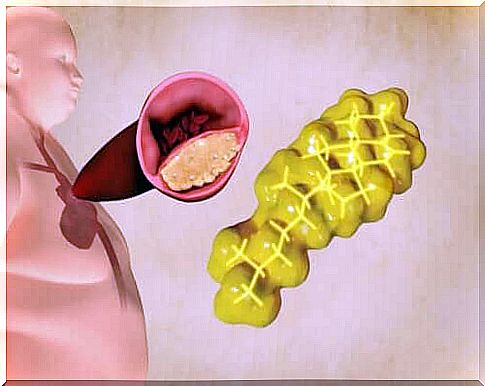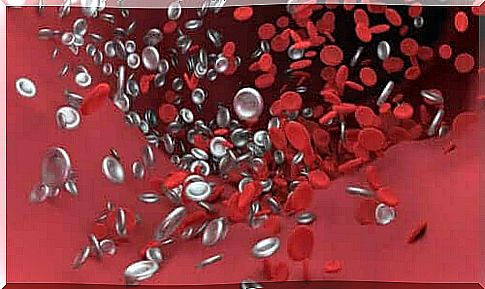Characteristics, Types And Function Of Lipids

The function of the lipids is important because they affect our overall health. They are not only important as an energy reserve for the body, but they also intervene in other essential processes such as the transport of nutrients and the regulation of body temperature.
These substances are diverse and come from different sources. They are also known for the role they play when it comes to feeding living things. This is because they are essential for the assimilation of vitamins and for the optimal functioning of the metabolism.
So what exactly are the lipids? What is their function? You may have heard of it before in the context of health and nutrition and you may want to understand it better. We tell you more about it below.
What is the function of lipids
Lipids are a group of biological molecules that intervene in relevant body processes. They are part of the cell membrane and are the basis for the production of hormones. They are mainly responsible for the storage of energy.
In addition, they consist of carbon and hydrogen and also contain sulfur, nitrogen and phosphorus in smaller amounts. In any case, their main feature is that they are insoluble in water and that they are one of the main energy reserves of the body.
The term “lipid” is often used to refer to “fat,” but not all lipids are fats. All fats, on the other hand, are lipids. Thus, there are different types of lipids and they are classified according to their physical properties and functions.

Types of lipids
As explained in an article in the scientific journal Biochimica et Biophysica Acta , the term “lipids” groups together several compounds that have relevant biological functions. Therefore, when we talk about these substances, it is important to understand their classification. What types of lipids are there?
Phospholipids
These consist of chains of fatty acids, phosphate and glycerol. They form hydrophobic structures, meaning they repel water. Their main function is the formation of cell membranes.
In addition, they also perform other actions, such as the digestion of other fats in the small intestine. The body is able to generate all the necessary phospholipids itself.
cholesterol
This is an essential molecule. Contrary to popular belief, it is not always bad and is part of the cell membranes. In addition, it is the precursor of various substances, such as certain vitamins and hormones such as steroids.
For example, a certain amount of cholesterol is essential for the proper functioning of the body. However, too much cholesterol can lead to buildup in the arteries. This can be a problem because there is a greater risk of heart attacks or ischemic problems when the blood vessels become blocked.
Glycolipids
These fats also contain sugar molecules in their structure. Their main function relates to the immune system. They are located on the outside of the cell membrane and act as a signal for the cell membrane.
Triglycerides
These consist of fat and alcohol. They are the molecules into which excess energy or sugars are converted in the body. As with cholesterol, too much triglycerides tend to build up in the arteries and the rest of the body. Therefore, high levels can lead to health problems.

Steroids
These are molecules made up of cholesterol and hormones. Some examples are testosterone and estrogen. In addition, they require cholesterol to be synthesized in the body. They mainly fulfill regulatory and activating functions.
What is the function of lipids in the body?
Depending on their type, lipids perform many essential bodily functions. According to a publication in Molecular Biology of the Cell, these are structural or signaling functions. We’ll explain some of the key features below in more detail.
Energy reserve is the main function of lipids
The main function of this substance is as a body reserve. One gram of fat can supply 9 kilocalories to the body. When a person has an excess of sugars in his body, they are stored in the form of fat deposits. They are used when other energy sources, such as carbohydrates, are lacking.
Structure formation
Some lipids form important structures in the body. The cell membranes are the most important example of this. They consist of a specific type of lipid; they, in turn, are essential for the formation and protection of the cell.
Cellular communication is a function of lipids
Cells communicate with each other through various signaling substances, such as vitamins, hormones and glycolipids. Their function is to regulate various secretions and bodily reactions.

Transport is another important function of lipids
There are lipids that act as a transporter for other substances throughout the body, such as nutrients. In general, this function is performed in combination with bile acids and lipoproteins.
Thermal regulation
The fatty deposits that accumulate under the skin and around the organs act as protection against the cold. The fat retains the heat and thus keeps the body warm.
Final Notes on the Function of Lipids
The types and functions of lipids are varied and complex, although these organic compounds are generally essential for life. They are also to a certain extent decisive for the proper functioning of the body. However, some of these substances are harmful in excess.
As you can see, you should try to adopt and maintain healthy lifestyle habits, especially when it comes to diet. Also schedule regular medical checkups. Medical treatment is often necessary if the levels are abnormal.









